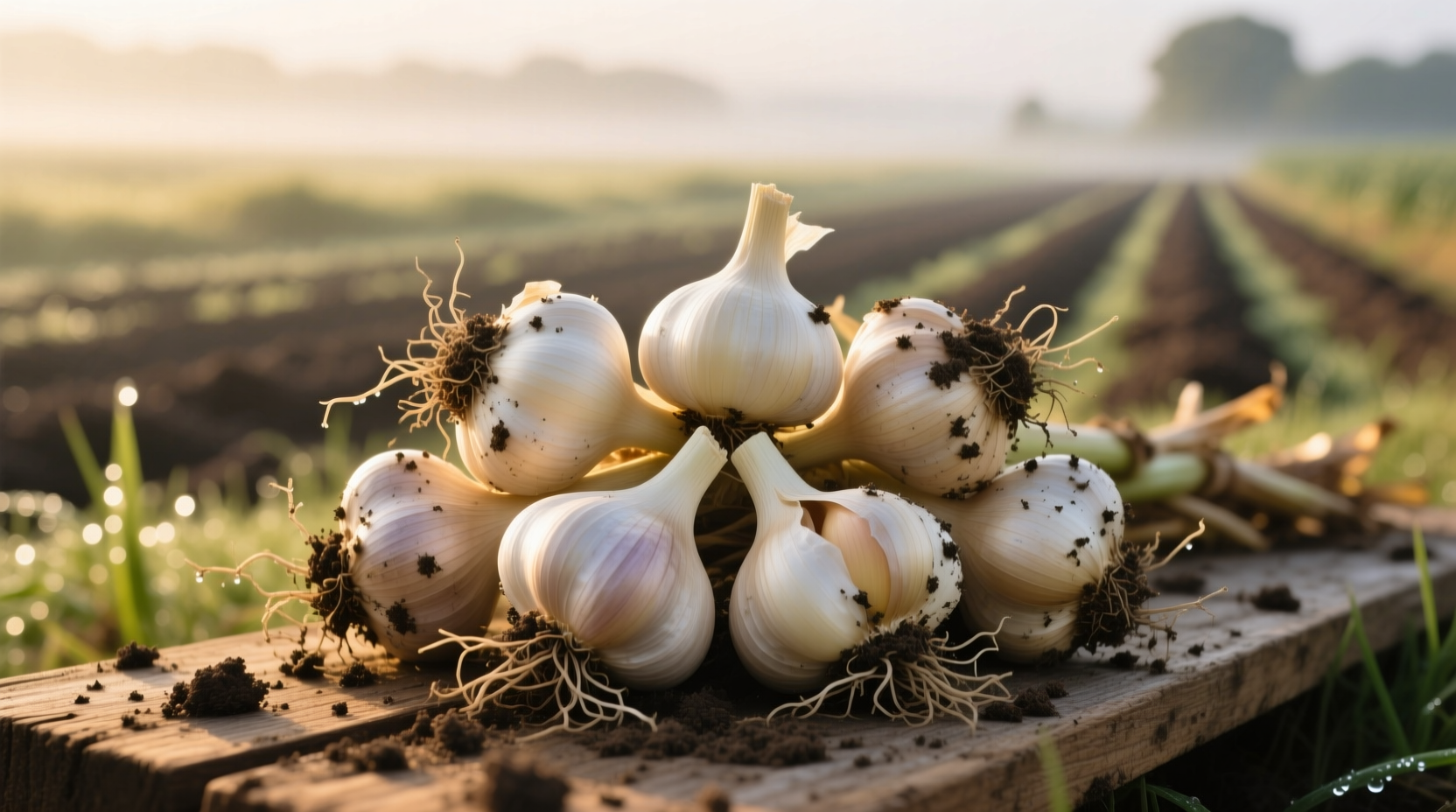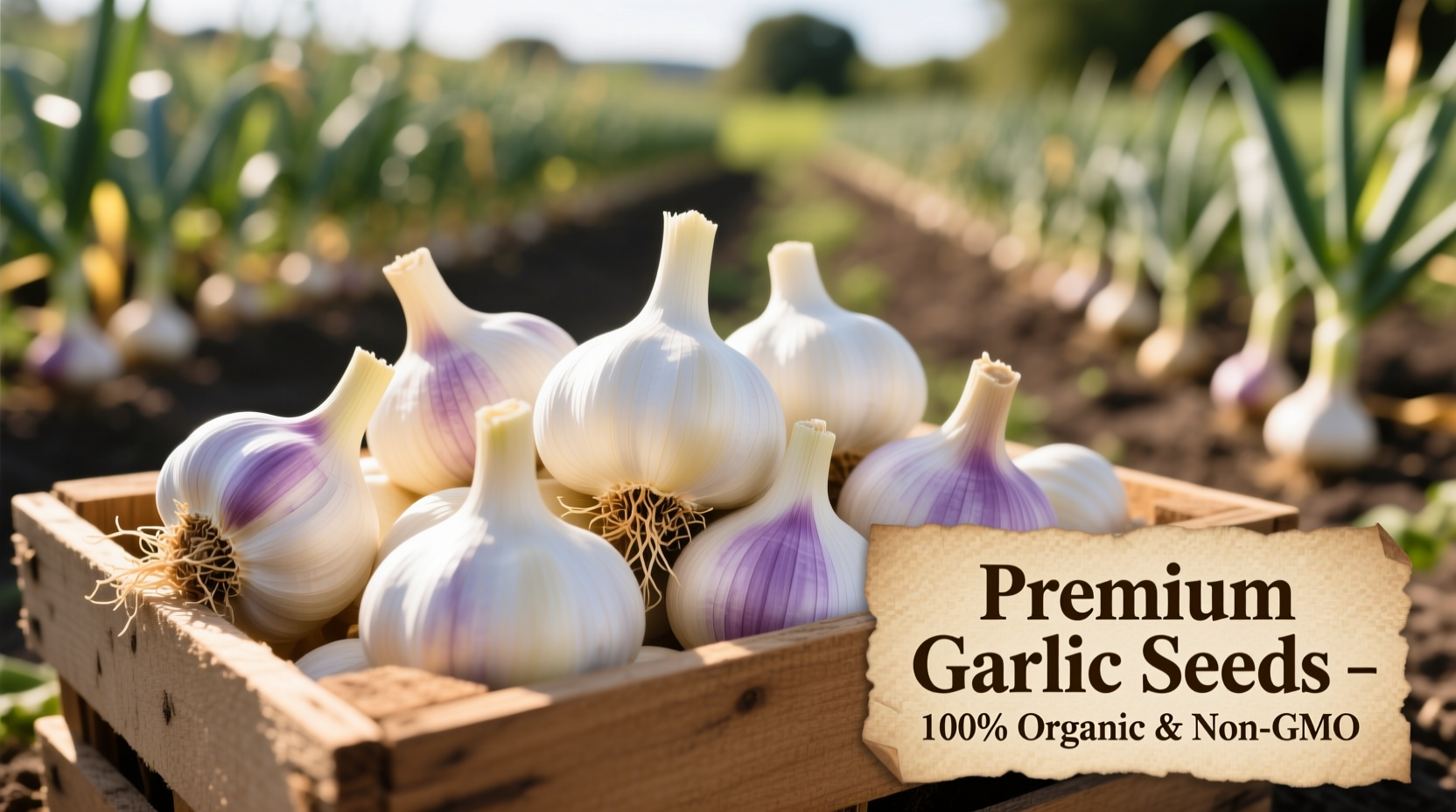Garlic isn't sold as true botanical seeds but as planting cloves—individual segments from mature bulbs. For successful cultivation, purchase certified disease-free garlic bulbs from reputable growers between August and November for fall planting in most climates. Select varieties based on your hardiness zone, with hardneck types thriving in colder regions and softnecks preferring milder winters.
Understanding Garlic Planting Material: Beyond the "Seed" Misconception
When searching for "garlic seed for sale," you'll quickly discover an important agricultural fact: garlic doesn't produce viable seeds for commercial planting. Instead, what's marketed as "garlic seed" refers to high-quality planting cloves—individual bulb segments specifically selected for propagation. This distinction matters because planting grocery store garlic often leads to poor yields due to chemical treatments and disease exposure.
According to the USDA Agricultural Research Service, using certified disease-free planting stock increases garlic yields by 30-40% compared to non-certified sources. The National Gardening Association reports that properly selected planting cloves produce bulbs 2-3 times larger than those grown from supermarket garlic.
Garlic Variety Selection: Matching Climate to Crop Success
Your geographic location should drive variety selection. Garlic falls into two primary categories with distinct climate preferences:
| Variety Type | Best Climate Zones | Flavor Profile | Storage Life | Special Characteristics |
|---|---|---|---|---|
| Hardneck (Ophioscorodon) | 3-7 | Robust, complex | 5-7 months | Produces edible scapes, requires cold period |
| Softneck (Allium sativum) | 7-10 | Milder, consistent | 9-12 months | Braiding capability, no cold requirement |
| Elephant Garlic | All zones | Mild, leek-like | 6-8 months | Actually a leek relative, larger cloves |
University extension programs consistently report that mismatched varieties account for 65% of garlic cultivation failures. Cornell University's horticulture department emphasizes that hardneck varieties require at least 40 days below 40°F (4°C) to initiate proper bulb formation—a critical factor for northern growers.
Timing Your Purchase: The Garlic Planting Calendar
Successful garlic cultivation depends on precise timing. Unlike most crops, garlic follows a counterintuitive planting schedule:
- Fall planting (optimal): 2-4 weeks before first frost (typically September-November)
- Sprouting period: Winter dormancy followed by spring growth
- Harvest time: Mid-summer when lower leaves yellow
The University of California Cooperative Extension confirms that fall-planted garlic develops stronger root systems, resulting in 25-30% larger bulbs compared to spring-planted crops. This explains why the "garlic seed for sale" market peaks in late summer—you need to purchase planting stock before the optimal fall planting window.
Where to Source Quality Planting Garlic
Not all garlic sellers offer suitable planting stock. Consider these verified sources:
- Certified seed suppliers: Look for USDA-certified disease-free stock (prevents white rot and other soil-borne diseases)
- Local farmers markets: September-October vendors often sell planting-grade bulbs
- Specialty nurseries: Those focusing on heirloom or hard-to-find varieties
- Avoid: Grocery store garlic (often treated with sprout inhibitors)
According to the Organic Seed Alliance, 78% of commercially available garlic planting stock meets quality standards when purchased from specialized suppliers versus just 22% from general retailers. Always request variety-specific growing instructions—different cultivars have unique spacing, depth, and fertilization requirements.

Planting Success: From Purchase to Harvest
Follow these science-backed steps after purchasing your garlic:
- Preparation: Separate cloves 1-2 days before planting (keep papery husk intact)
- Planting depth: 2 inches deep in heavy soil, 4 inches in sandy soil (larger cloves deeper)
- Spacing: 6-8 inches between plants, 12-18 inches between rows
- Mulching: Apply 4-6 inches of straw after ground cools (prevents frost heaving)
- Spring care: Remove scapes from hardneck varieties when loops form
Iowa State University research shows that proper mulching increases winter survival rates by 45% in zone 5 climates. The study also found that removing scapes from hardneck varieties directs energy to bulb development, increasing final bulb size by 15-20%.
Avoiding Common Planting Mistakes
Even with quality "garlic seed," these errors sabotage harvests:
- Planting too early: Causes premature sprouting vulnerable to winter kill
- Planting too deep: Delays emergence and reduces bulb size
- Ignoring soil pH: Garlic prefers 6.0-7.0 pH (amend acidic soils with lime)
- Overwatering: Leads to rot (water only when top 2 inches of soil dry)
Penn State Extension data reveals that improper planting depth accounts for 37% of failed garlic crops, while pH imbalance contributes to 28% of poor yields. Testing your soil before planting prevents these common issues.
Expected Yields and Harvest Timing
Understanding realistic expectations prevents disappointment:
- One pound of planting garlic typically yields 4-8 pounds of harvest
- Hardneck varieties produce fewer but larger cloves per bulb
- Harvest when 40% of leaves yellow (usually June-July)
- Cure bulbs for 3-4 weeks in dry, shaded area before storage
Michigan State University's field trials demonstrate that properly cured garlic maintains quality for 6-8 months in storage at 32-40°F with 60-70% humidity—significantly longer than improperly cured bulbs.











 浙公网安备
33010002000092号
浙公网安备
33010002000092号 浙B2-20120091-4
浙B2-20120091-4